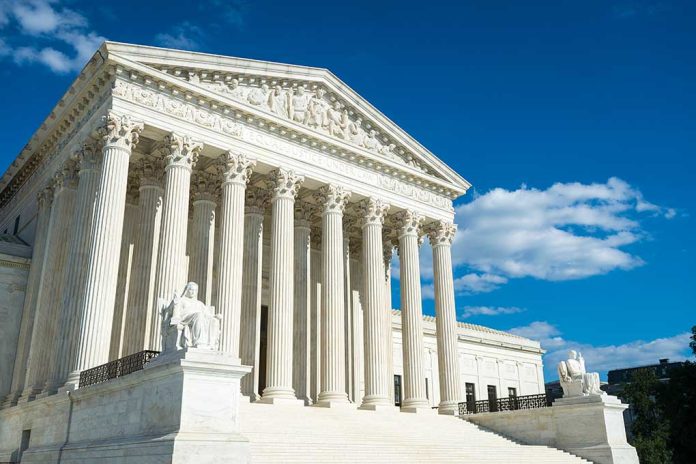
The U.S. Supreme Court has declined to block the Biden administration’s regulation on power plant carbon emissions, allowing the Environmental Protection Agency (EPA) to move forward with its plan to limit emissions from coal-fired power plants.
At a Glance
- Supreme Court allows EPA to proceed with carbon emissions regulation for power plants
- Regulation requires coal-fired plants to capture 90% of emissions or shut down within 8 years
- Over two dozen states and industry groups challenged the regulation
- EPA estimates up to $370 billion in climate and health benefits by 2047
- Decision is temporary while lower courts continue to review the case
Supreme Court Upholds EPA’s Authority
In a significant decision, the U.S. Supreme Court has allowed the Environmental Protection Agency (EPA) to proceed with its plans to limit carbon emissions from power plants. This ruling marks a temporary victory for the Biden administration in its efforts to combat climate change. The regulation, which aims to eliminate pollution from coal, a major source of carbon dioxide, is a key component of the administration’s goal to reduce emissions by 2050.
The Supreme Court’s decision comes despite challenges from over two dozen states and industry groups, who questioned the effectiveness and feasibility of the emission control techniques. The ruling is provisional and was made in response to an emergency application as the challenge progresses through lower courts.
BREAKING: The Supreme Court let the EPA move ahead with its stringent new emissions limits for power plants in a major boost for Biden administration efforts to tackle climate change. https://t.co/3SkSmuz53m
— Bloomberg Law (@BLaw) October 16, 2024
Implications for Power Plants and Consumers
The EPA rule mandates that coal-fired power plants capture 90% of carbon emissions or shut down within eight years, with compliance deadlines starting in 2025. This stringent requirement has raised concerns among industry groups and some states about potential economic impacts and the feasibility of implementing such technologies.
The National Mining Association opposes the rule, citing potential economic harm and increased electricity demand. Critics argue that the rule may lead to plant closures and increased electricity rates, potentially affecting consumers and businesses across the country.
Big Oil tried to stop important climate action, but in a win for the planet, the Biden administration's commonsense restrictions on methane pollution are safe! The Supreme Court rejected bogus arguments and should do so again with the next climate case.https://t.co/7Mvi7elXQT
— NRDC 🌎🏡 (@NRDC) October 4, 2024
Environmental Benefits and Legal Challenges
Supporters of the regulation, including the Natural Resources Defense Council, call it modest but essential in the fight against climate change. The EPA estimates that the rule could provide up to $370 billion in climate and health benefits and prevent 1.4 billion metric tons of carbon pollution by 2047. This reduction in emissions is equivalent to removing 328 million gasoline-powered cars from the roads.
However, the legal battle is far from over. Challengers argue that the EPA has overstepped its authority and imposed unattainable standards. They claim the rule violates the “major questions doctrine” and that the required “90% carbon capture” technology is not commercially viable. The Supreme Court’s decision allows the rule to remain in effect while the D.C. Circuit Court continues to review the case.
Political and Economic Considerations
The case highlights ongoing debates about the balance between environmental protection and economic concerns, a topic of particular interest to many conservative voters. The decision comes at a time when the Supreme Court has recently overturned the longstanding Chevron doctrine, which may complicate future environmental regulations.
As the legal challenges continue, the impact of this ruling on American families and businesses remains to be seen. The Biden administration’s push for cleaner energy sources and reduced emissions will likely face continued scrutiny and opposition from states and industries concerned about economic repercussions. The ultimate resolution of this case could have far-reaching implications for U.S. energy policy and environmental regulation for years to come.
Sources:
- Supreme Court clears way for Biden’s plan to cut power plant emissions
- Supreme Court Allows E.P.A. to Limit Power Plant Emissions
- Supreme Court allows rule limiting pollution from coal-fired power plants to remain in effect
- Supreme Court allows EPA emissions rule to stand while litigation continues
- US Supreme Court won’t pause EPA power plant emissions rule














